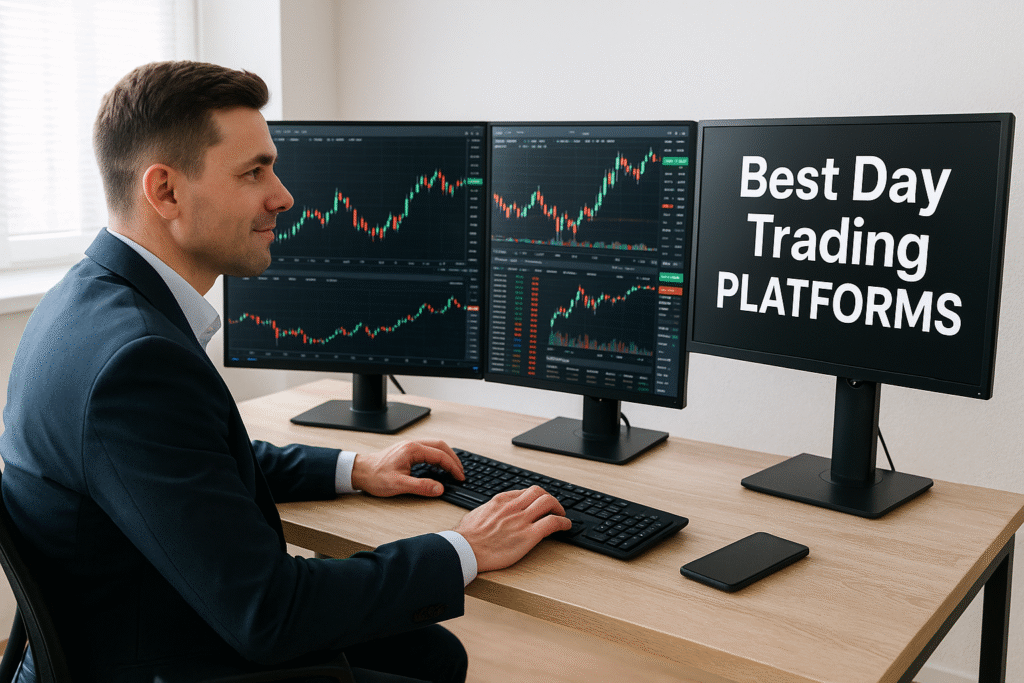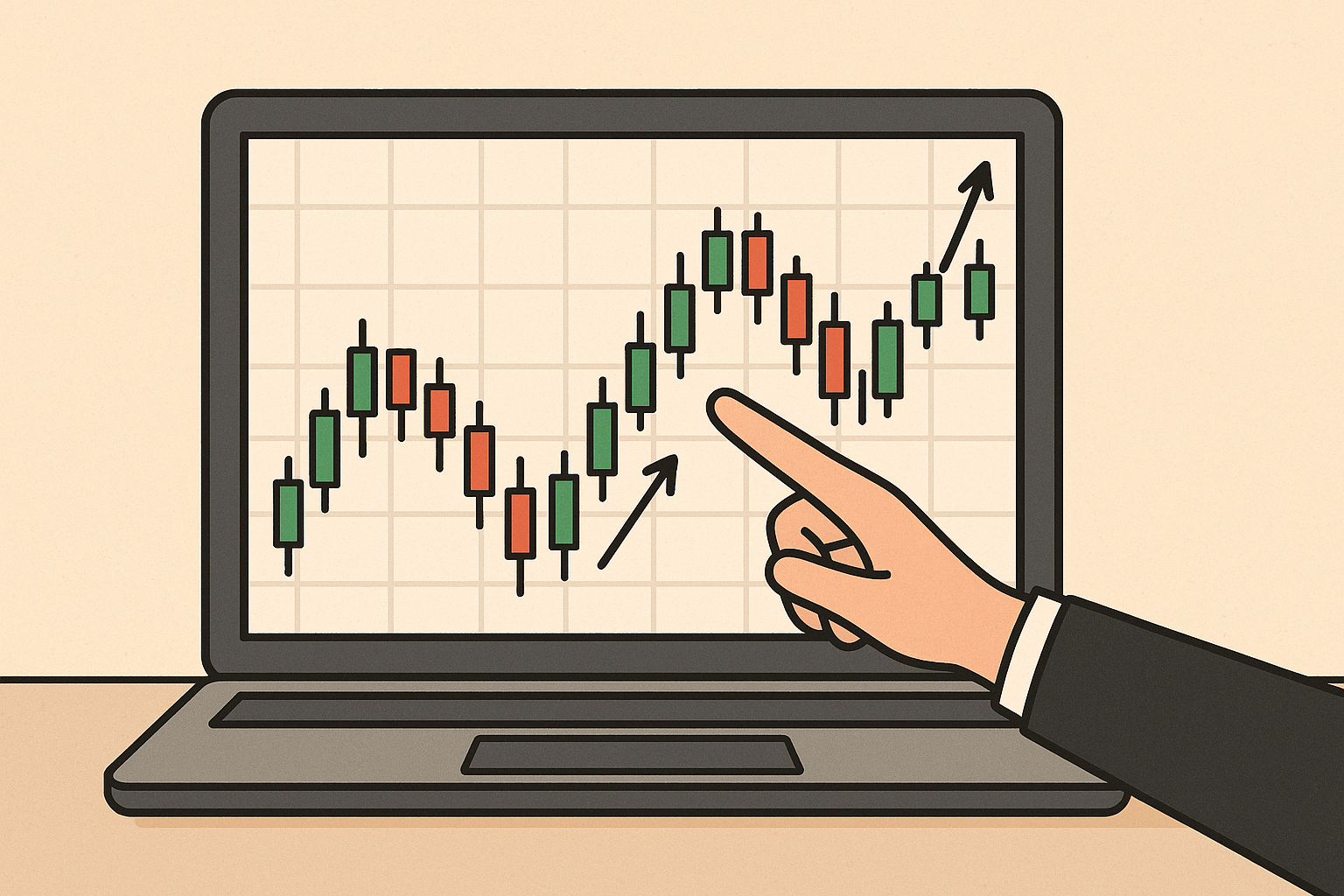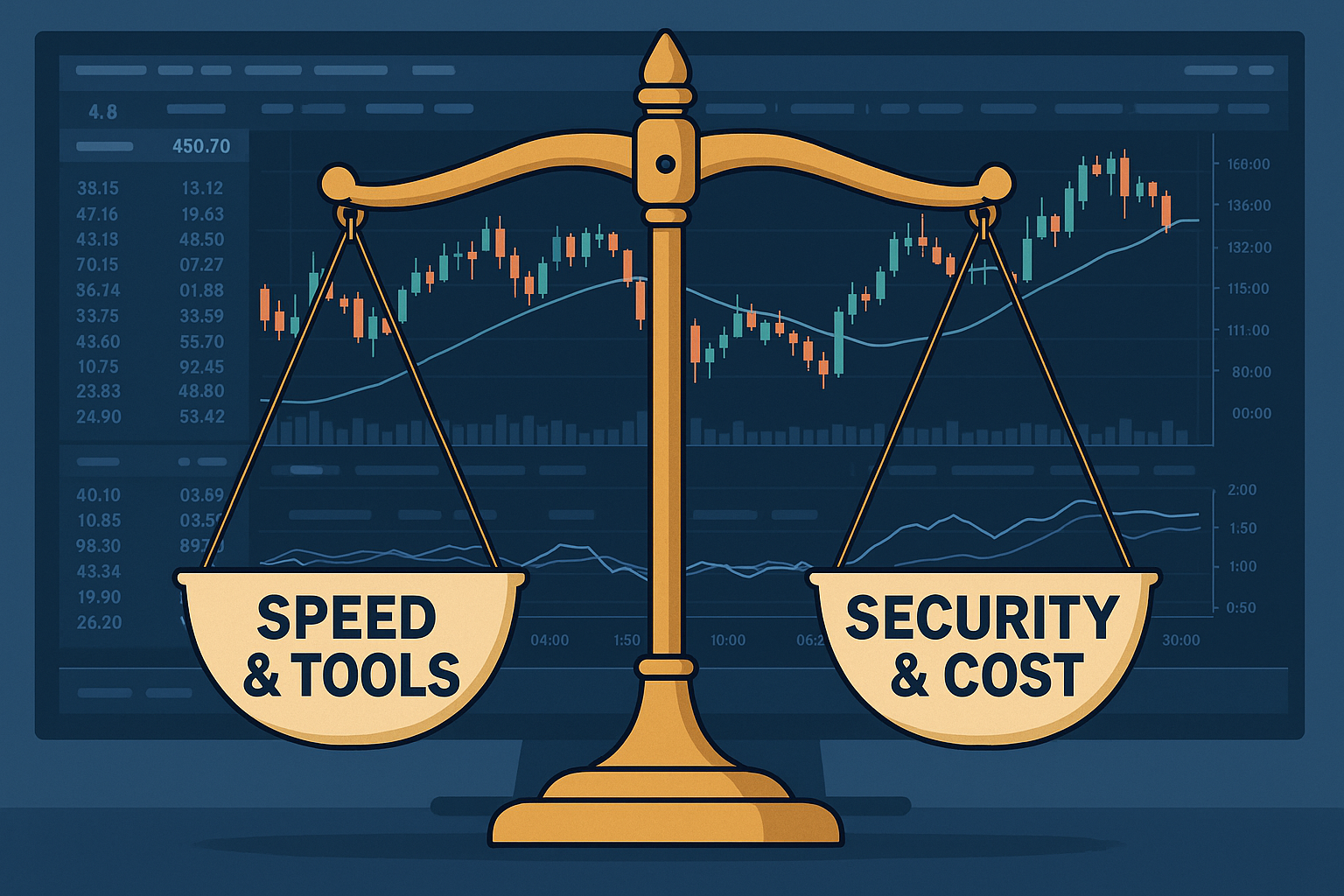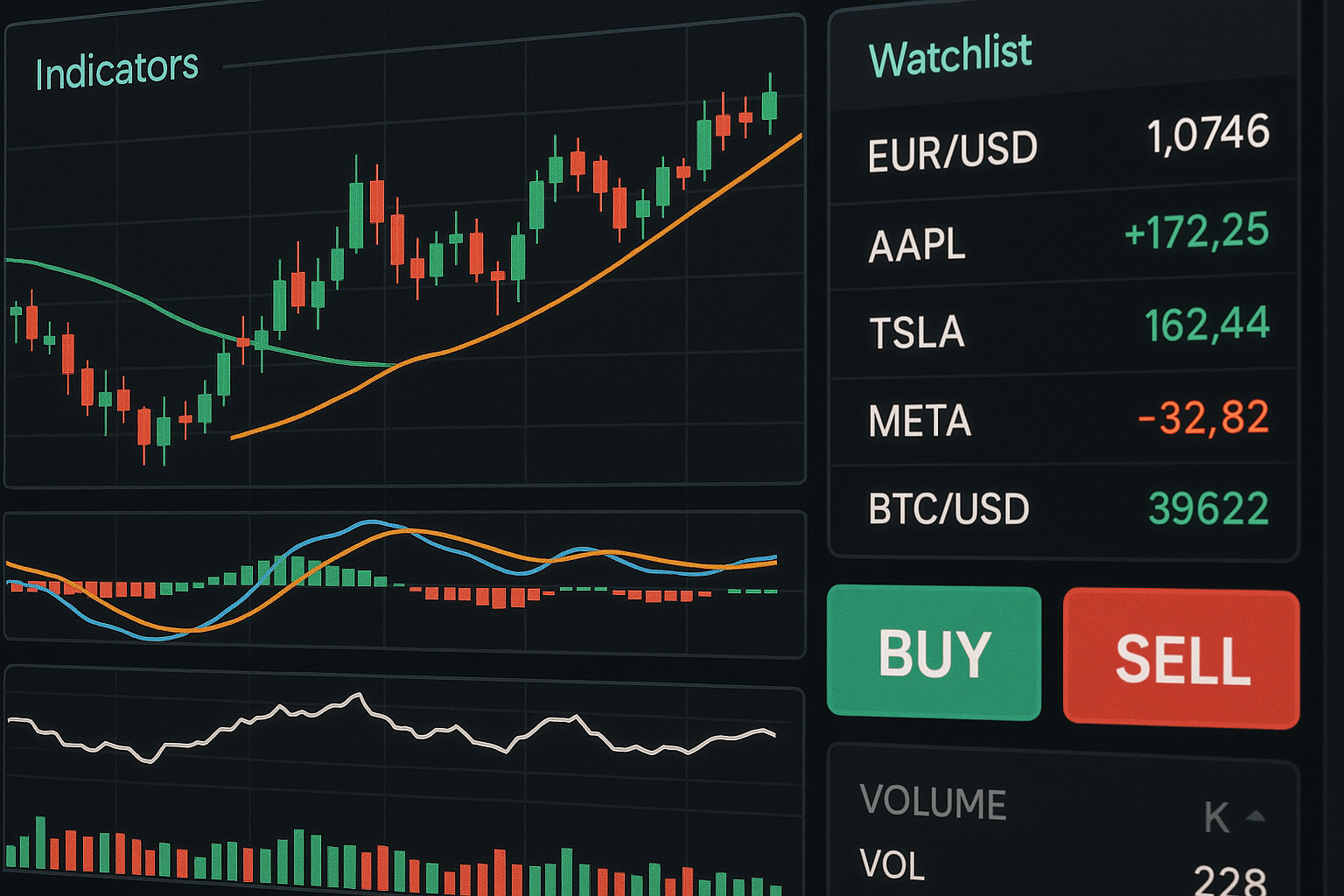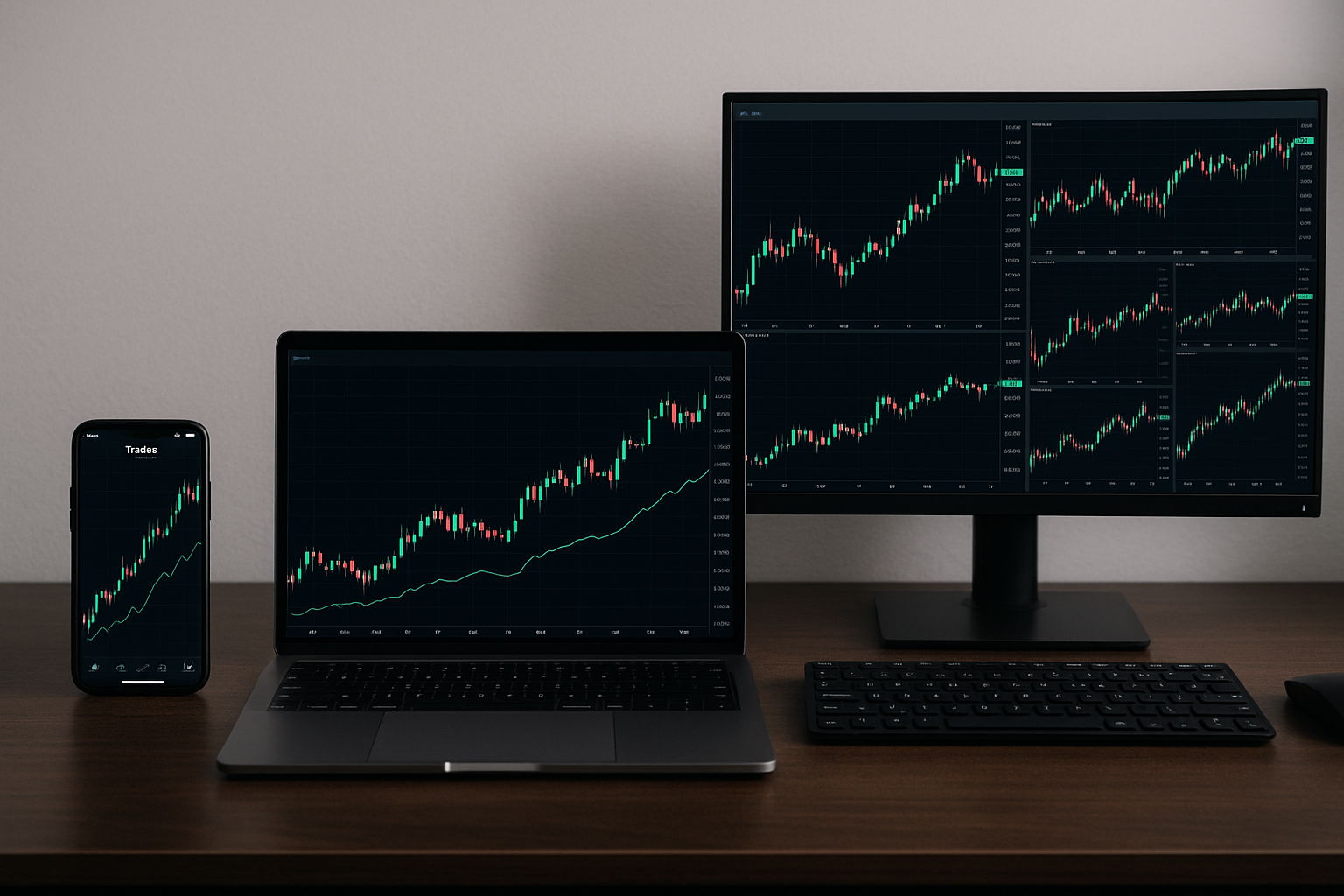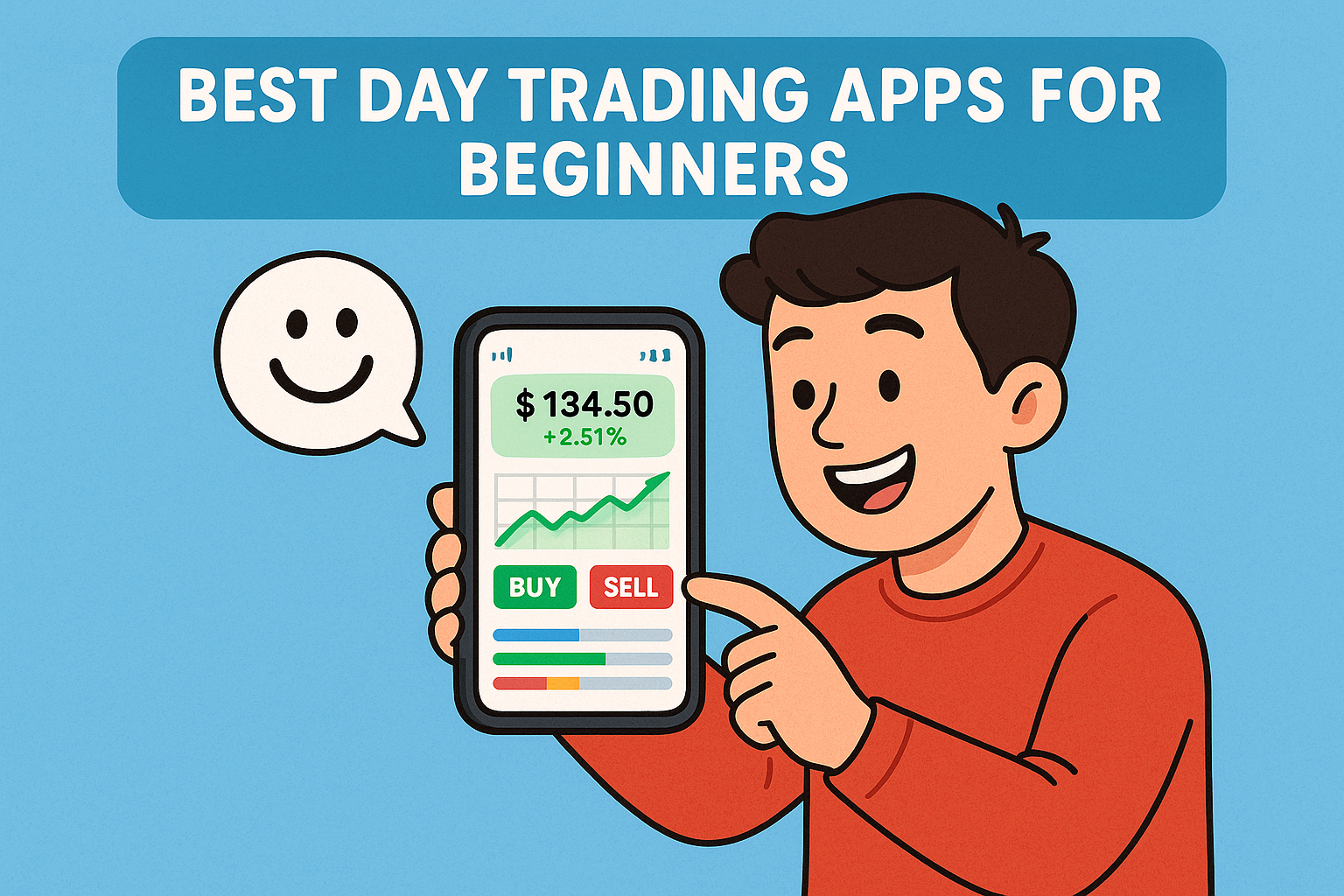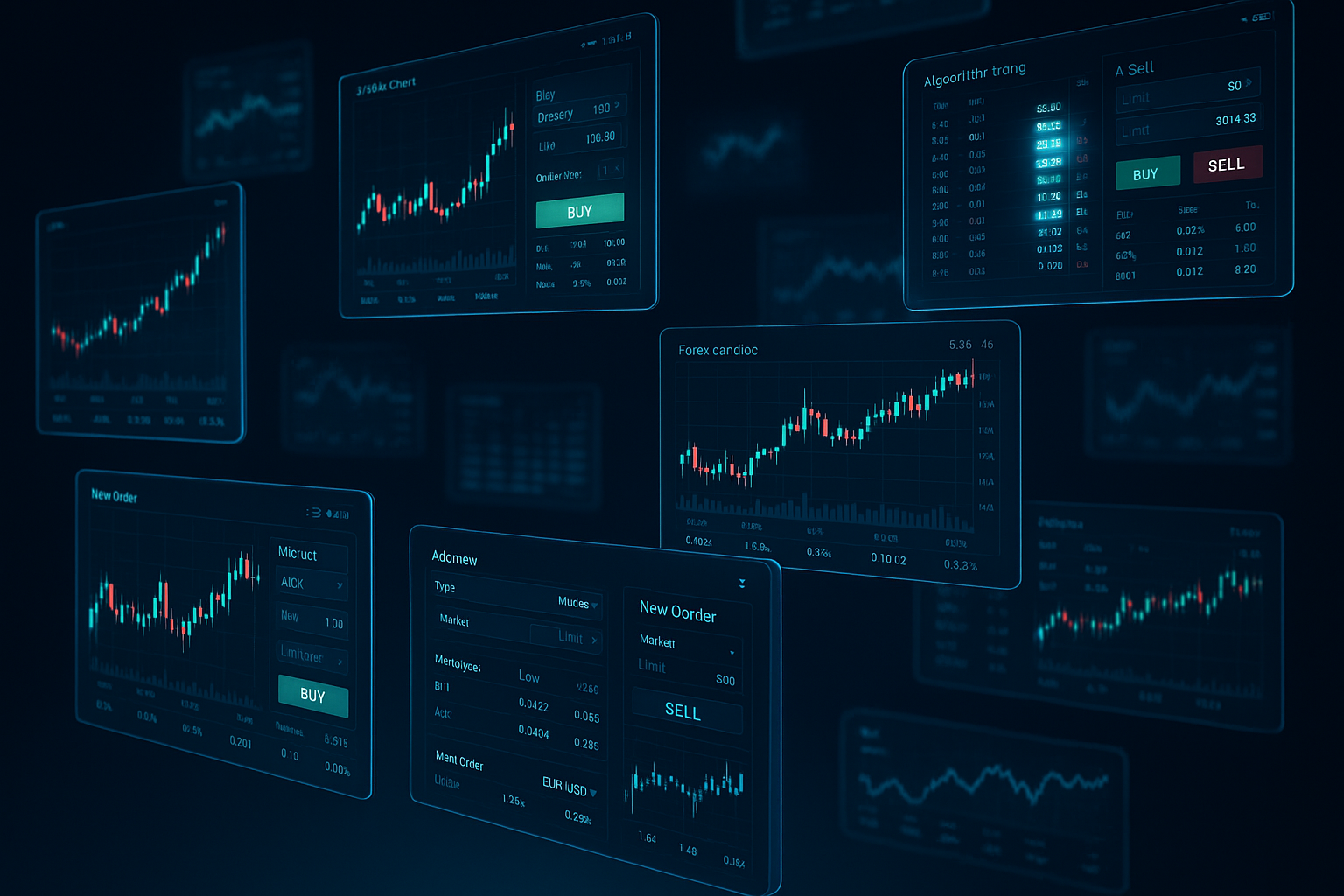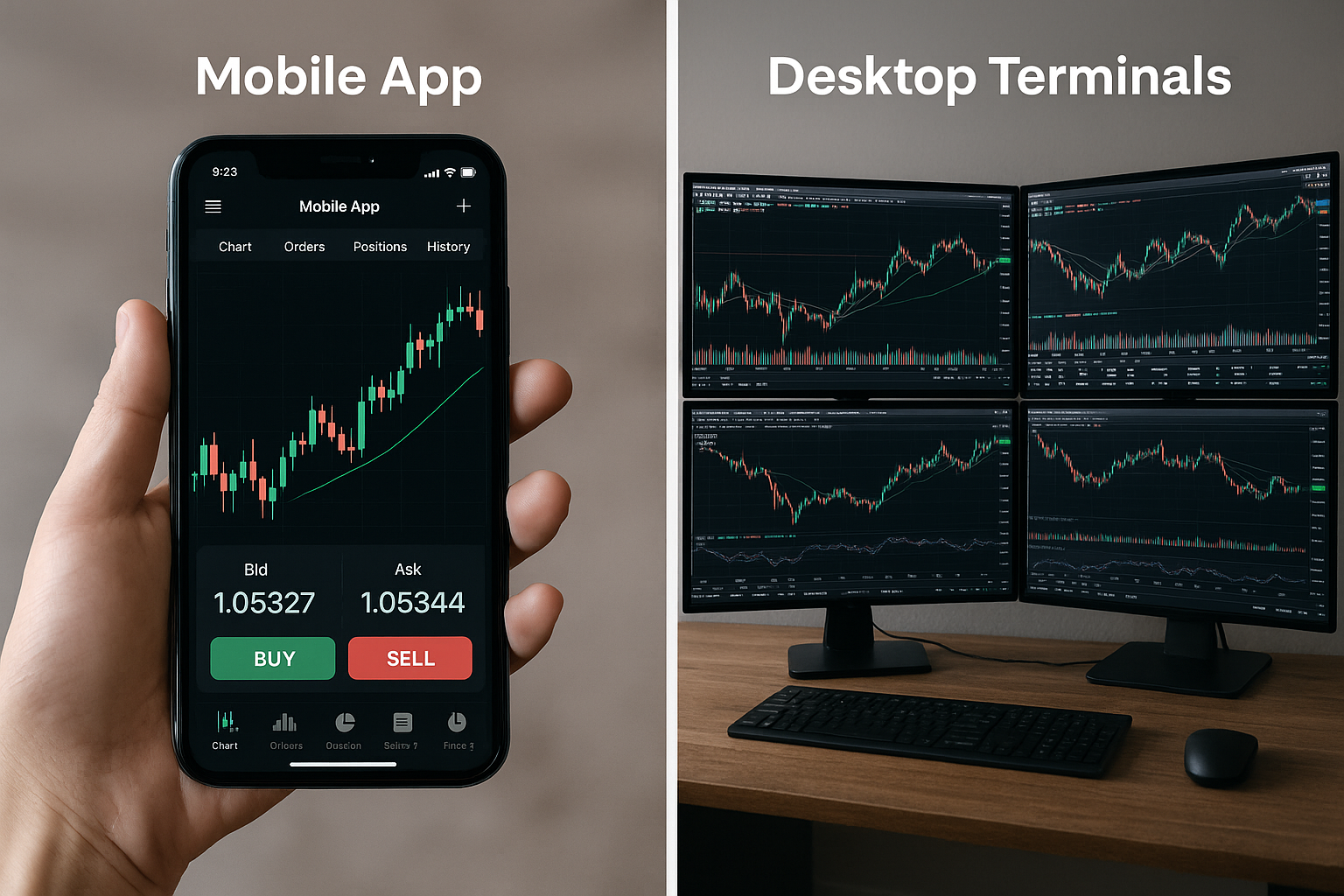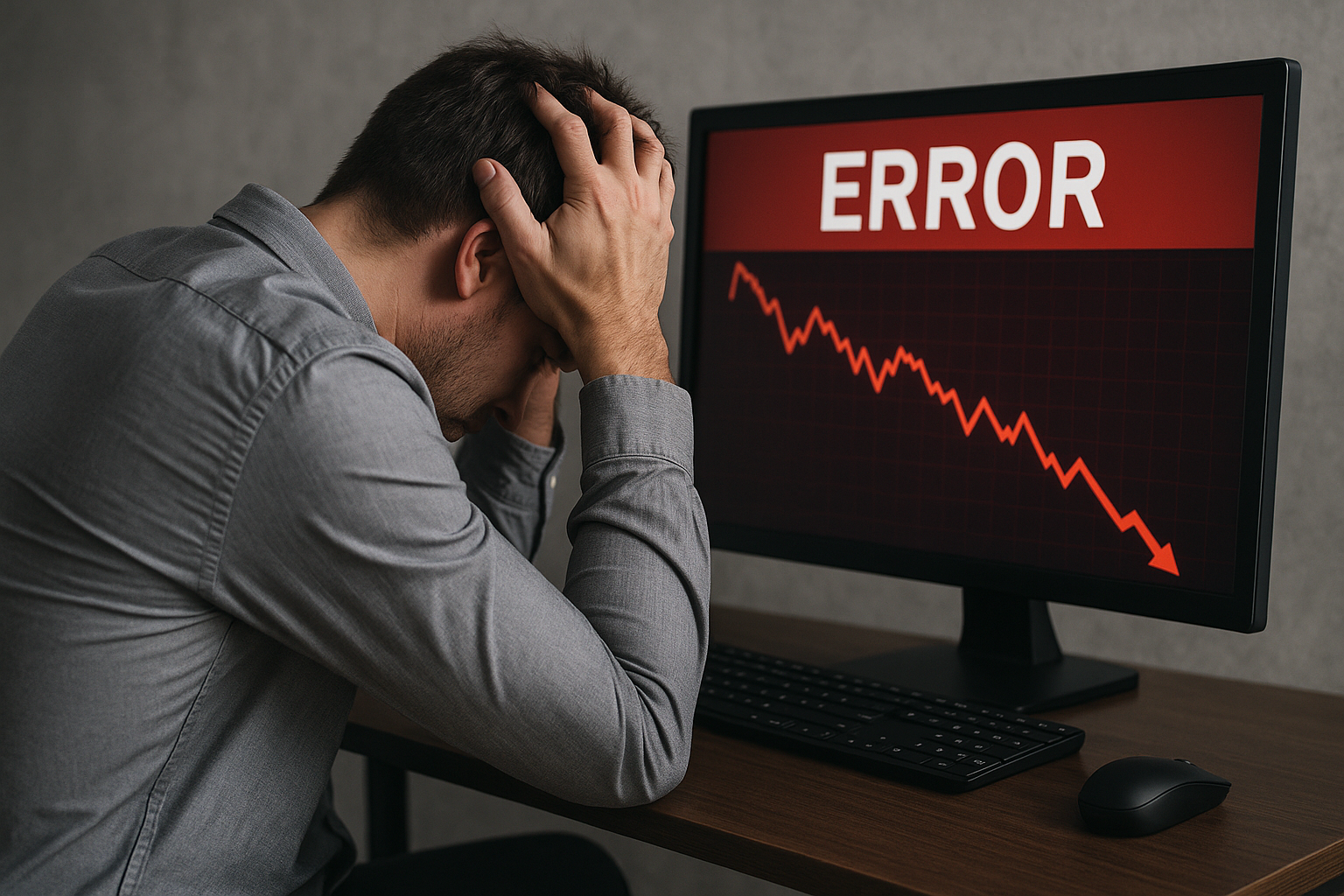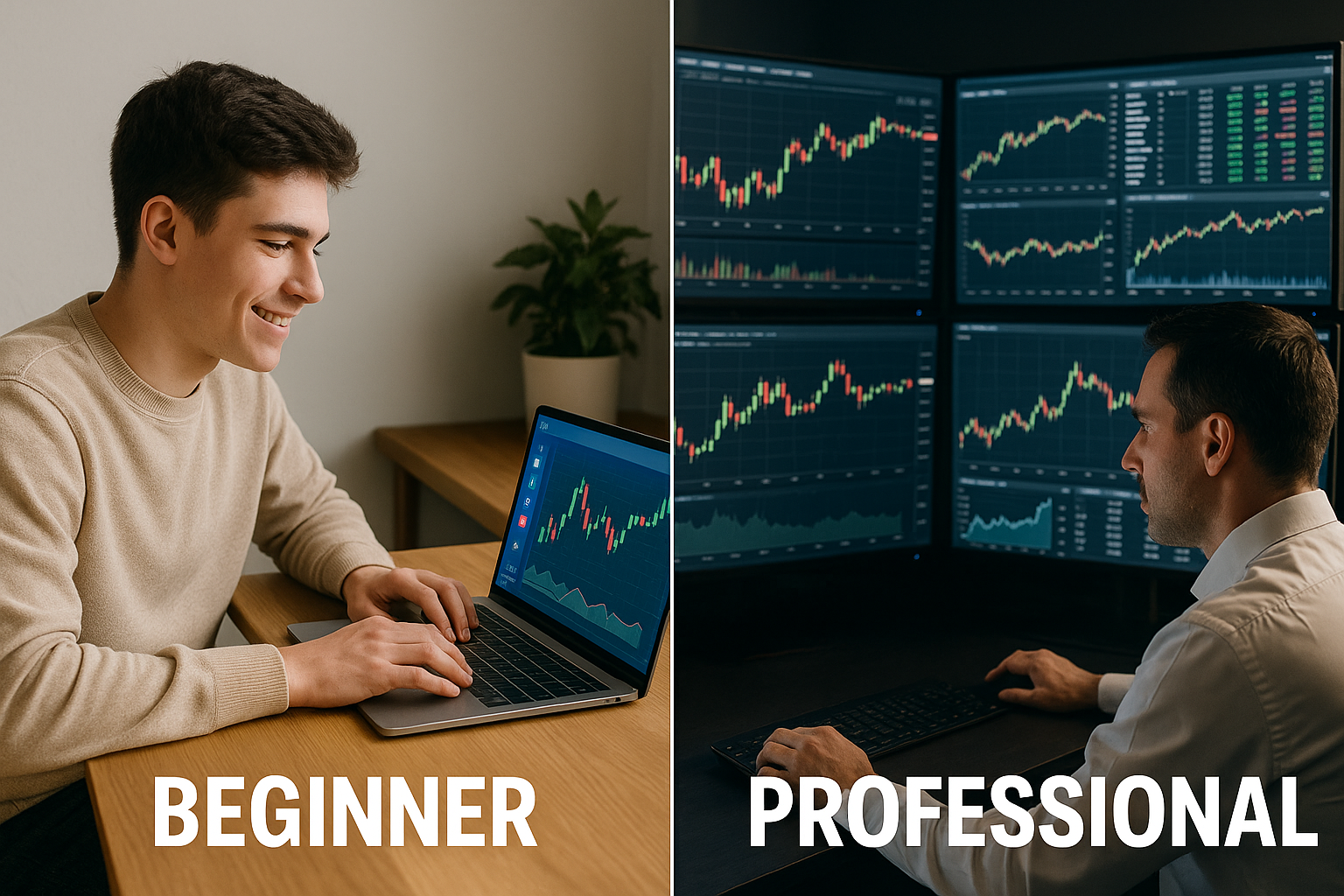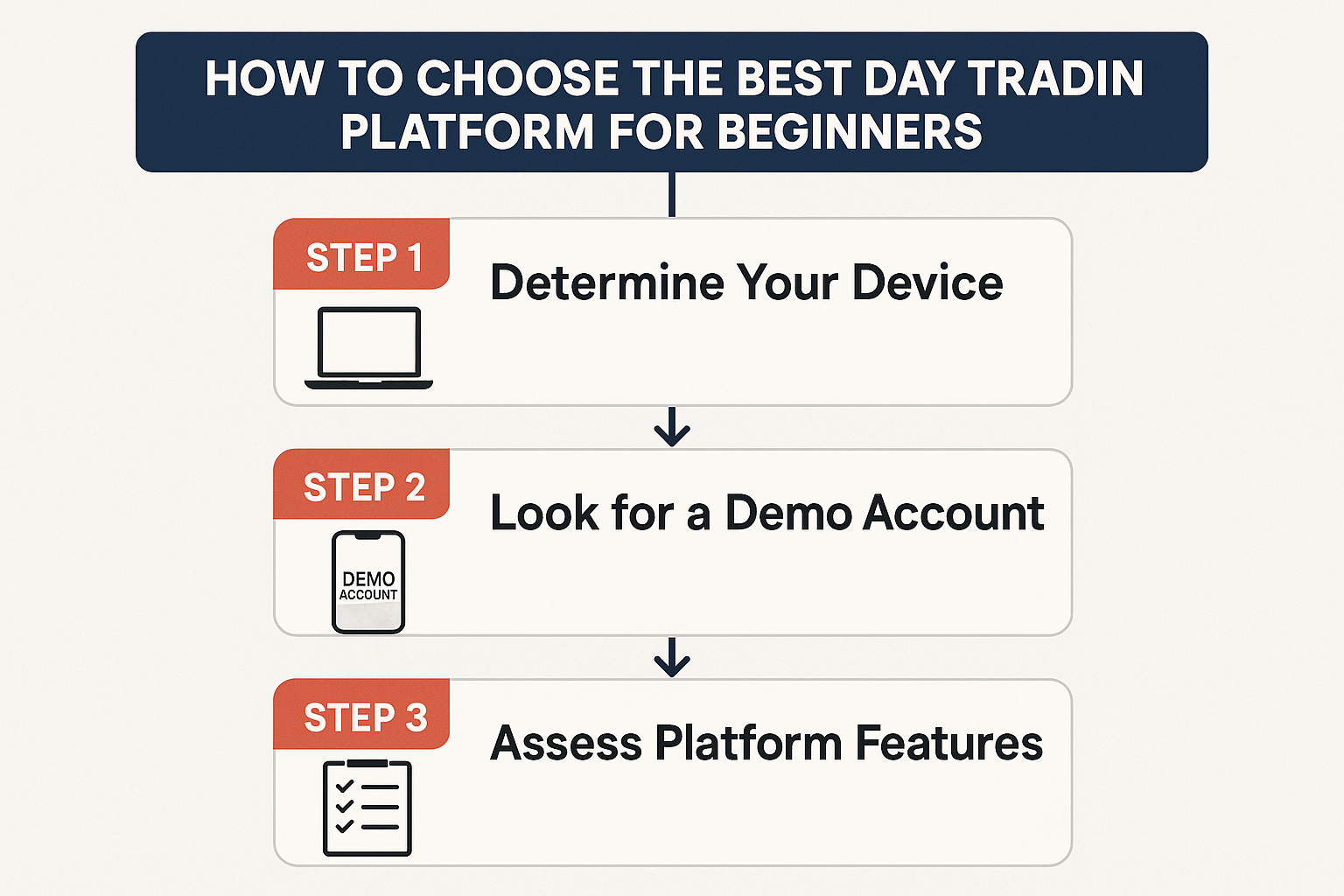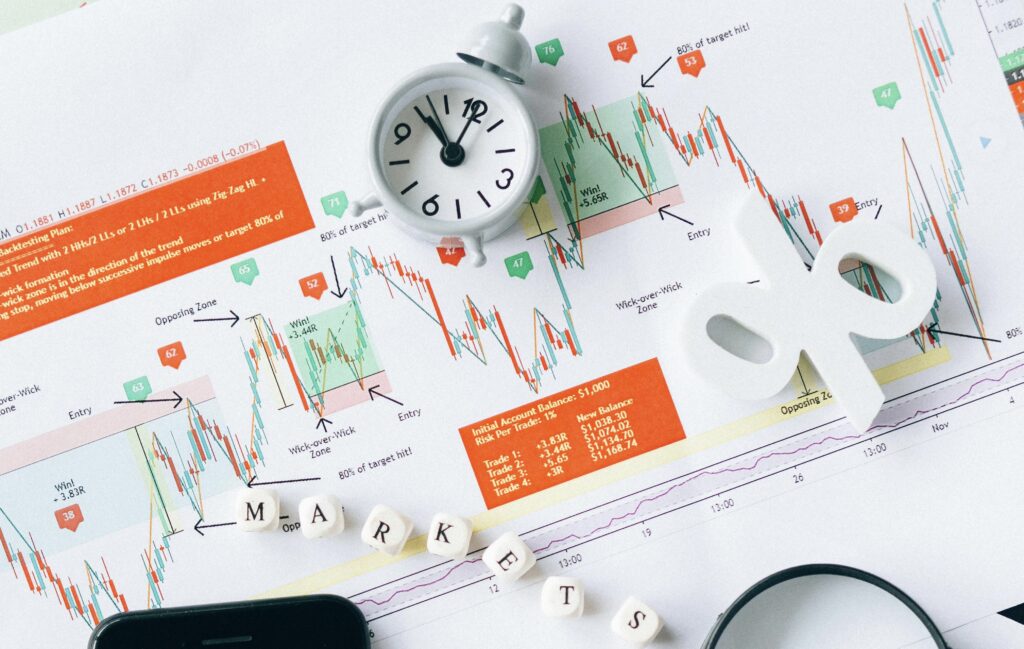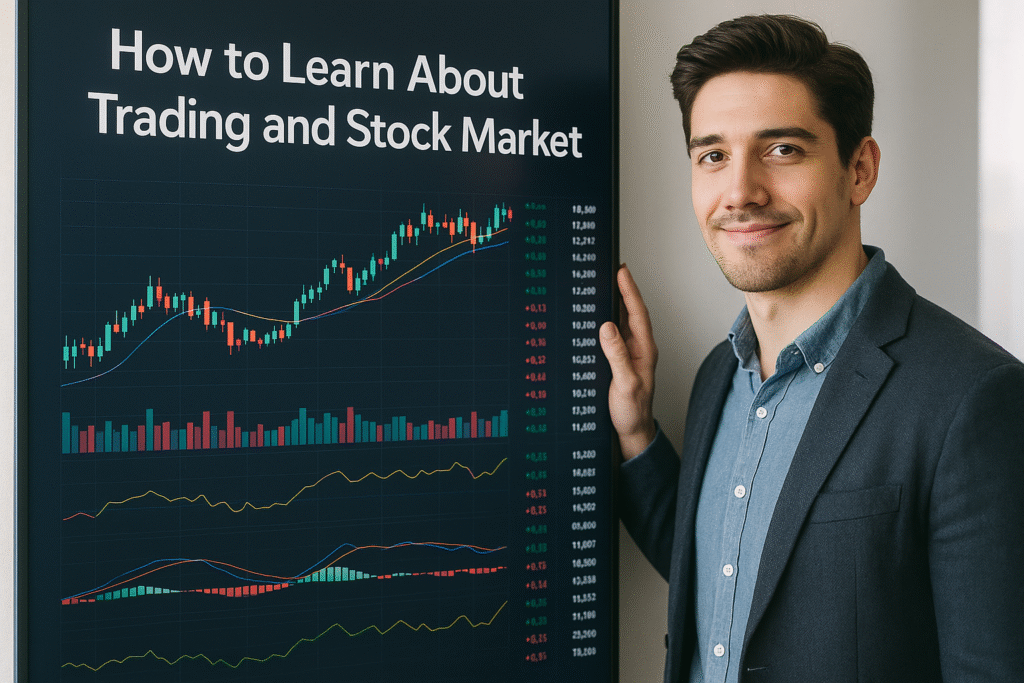Introduction
Day trading has become one of the most popular ways for individuals to participate in the stock market. Unlike long-term investing, where you buy and hold shares for months or even years, day trading focuses on short-term trades that happen within a single day. Traders open and close their positions quickly, trying to take advantage of small price changes in stocks, forex, or commodities. To do this successfully, one essential tool is a day trading platform.
Many traders are searching for the Best Day Trading Platforms in 2025 to enhance their trading experience.
A day trading platform (also called an online trading software or day trading application) is the program or website that allows you to buy and sell securities in real-time. These platforms are designed to give traders fast execution speeds, advanced charting tools, technical indicators, and live market data. Without a reliable platform, even the best trading strategy can fail—because in day trading, every second counts.
The Best Day Trading Platforms in 2025 offer features that cater specifically to day traders’ needs.
Many beginners often ask:
-
Which is the best day trading platform for beginners?
-
What is the best website for day trading?
-
Do I need special trading software or will a regular broker account work?
The truth is, not all day trading websites or brokers are created equal. Some focus on low fees, while others specialize in advanced tools like algorithmic trading or technical analysis charts. Choosing the best broker for day trading depends on your style, budget, and the type of markets you want to trade.
Understanding the Best Day Trading Platforms in 2025 is crucial for effective trading.
In this guide, we will cover everything you need to know about day trading platforms:
The Best Day Trading Platforms in 2025 are designed to help traders maximize their efficiency and success.
In this article, we will review the Best Day Trading Platforms in 2025 to help you make an informed choice.
-
What they are and why they matter
-
How to compare different day trading software and apps
-
The features that make a trading terminal reliable
-
The pros and cons of popular platforms in 2025
-
Tips for beginners to choose the best day trading platform
Here are some tips to find the Best Day Trading Platforms in 2025 that fit your trading style.
By the end, you’ll have a complete picture of how to pick the right intraday trading platform and avoid common mistakes that many new traders make. Whether you are looking for the best app for day trading on your phone or a professional-grade trading software on your desktop, this article will guide you step by step.
How to learn about trading and stock market
Understanding the Stock Market: A Friendly Guide for Beginners
Investing in the Best Day Trading Platforms in 2025 can be a game changer for your trading strategy.
What is a Day Trading Platform?
A day trading platform is a special type of software or website that allows traders to buy and sell financial instruments—such as stocks, forex, ETFs, or cryptocurrencies—within the same trading day. Unlike traditional investing platforms, which are designed for long-term portfolio management, a day trading application focuses on speed, flexibility, and real-time data.
The Best Day Trading Platforms in 2025 will include innovative features to help traders succeed.
The main purpose of a day trading platform is to give traders the tools they need to enter and exit trades quickly. Since day traders aim to take advantage of small price movements, even a delay of a few seconds can make the difference between profit and loss. That’s why these platforms are built for fast execution, live price feeds, and advanced order types like stop-loss, limit orders, and trailing stops.
Another important point is the difference between a regular online broker and a day trading software:
Having access to the Best Day Trading Platforms in 2025 will enhance your trading toolkit significantly.
-
A normal broker might be suitable for investors who buy and hold stocks for months.
-
A day trading platform, on the other hand, offers features like advanced charting tools, real-time technical indicators, and customizable dashboards—things that active traders rely on every day.
In simple terms, if you are planning to trade actively during the day, you need more than just an account—you need a powerful trading terminal that can handle quick decisions, market analysis, and order execution all at once.
This is why choosing the best trading platform for day traders is such an important step. The right platform can boost your confidence, help you spot opportunities faster, and reduce trading risks. On the other hand, the wrong platform may limit your performance and even increase your losses.
How Day Trading Platforms Work
To understand day trading platforms, it helps to break down how they actually function in real time. A day trading platform is the bridge between you and the stock market. When you place a trade—whether it’s buying or selling—the platform communicates with your broker, which then connects to the exchange. All of this happens in just a fraction of a second.
Here’s a step-by-step look at how most day trading software works:
-
Market Data Feed
The platform pulls live price quotes, charts, and order book information directly from the exchange. This is what lets you see stock prices moving second by second. -
Order Placement
When you click “Buy” or “Sell,” your order travels from the trading platform to the broker’s system, and then to the stock exchange. The faster this process is, the better—because in day trading, prices change rapidly. -
Execution Speed
High-quality day trading platforms are designed to reduce latency (delay). This means your order gets executed at the price you see, not at a delayed or worse price. -
Risk Management Tools
Many platforms include features like stop-loss and take-profit orders. These tools automatically close your position when the price hits a certain level, protecting you from heavy losses. -
Analysis and Charting
Traders rely heavily on technical analysis. That’s why a good program for stock market activity includes customizable charts, technical indicators (like RSI, MACD, Bollinger Bands), and drawing tools. -
Mobile vs. Desktop Access
-
Mobile day trading apps are perfect for quick trades on the go.
-
Desktop trading terminals usually offer deeper analysis, faster execution, and professional-level features.
-
In simple words: a day trading platform is your trading engine. It combines real-time data, fast execution, and analytical tools in one place. Without it, making informed and timely trading decisions would be almost impossible.
Choosing among the Best Day Trading Platforms in 2025 requires careful consideration of features and fees.
Key Features of the Best Day Trading Platforms
Not all trading platforms are created equal. Some are designed for casual investors, while others are built for professional day traders who need speed and precision. If you’re looking for the best day trading platform, here are the most important features to consider:
Considerations for the Best Day Trading Platforms in 2025 also include user interface and customer support.
1. Speed and Reliability
In day trading, every second counts. A platform must execute trades instantly and provide real-time market data without lag. Slow execution can turn a winning trade into a losing one. The best brokers for day trading usually offer low-latency platforms that are stable even during high market volatility.
2. Advanced Charting Tools
Charts are the lifeblood of day trading. A strong day trading application should offer:
-
Multiple timeframes (1-minute, 5-minute, daily, etc.)
-
Technical indicators like RSI, MACD, and moving averages
-
Drawing tools to mark trends, support, and resistance levels
This helps traders analyze price movements and make informed decisions.
3. Risk Management Options
The best trading software gives traders the ability to manage risks through tools like:
-
Stop-loss orders (to limit losses automatically)
-
Take-profit orders (to lock in profits)
-
Trailing stops (to protect profits while allowing gains to run)
4. Customizable Dashboard
When evaluating options, look for the Best Day Trading Platforms in 2025 based on your trading goals.
Every trader has a unique style. A good day trading terminal should allow customization of layouts, watchlists, and charts. This makes it easier to focus on the most relevant data.
5. Integration and Accessibility
-
Desktop software for professional use
-
Mobile day trading apps for trading on the go
-
Cloud-based access for flexibility
6. Low Fees and Transparent Pricing
Day traders make multiple trades in a single day, so even small commissions add up. The best website for day tradingoffers competitive fees, tight spreads, and clear pricing without hidden charges.
With these features, traders can separate average platforms from the best day trading platforms for beginners and pros. A reliable platform should not only help you trade but also protect your money and reduce unnecessary risks.
Types of Day Trading Software
The Best Day Trading Platforms in 2025 will adapt to the evolving market landscape.
Day trading isn’t limited to a single kind of tool. Traders can choose from different types of platforms depending on their style, experience, and device preference. Let’s break down the main categories of day trading software available today:
1. Online Trading Websites
These are browser-based platforms you can access from any computer without downloading software. They’re convenient for beginners because you only need a login and internet connection. Examples include Webull Web Platform and Robinhood Web.
-
Pros: Easy access, no installation required.
-
Cons: Sometimes slower and less feature-rich than desktop terminals.
2. Desktop Trading Software
Professional traders often prefer downloadable trading terminals because they provide faster execution, advanced tools, and higher customization. Platforms like Thinkorswim (TD Ameritrade) or MetaTrader are popular choices.
-
Pros: Fast, reliable, advanced features.
-
Cons: Requires a powerful computer and stable internet connection.
3. Mobile Day Trading Apps
For traders who want to stay active on the go, day trading apps are essential. Apps like eToro, Webull, and Interactive Brokers Mobile let you monitor charts, execute trades, and manage your portfolio from your phone.
-
Pros: Portable, user-friendly, quick access anywhere.
-
Cons: Limited charting and smaller screen size.
Utilizing the Best Day Trading Platforms in 2025 can improve your trading outcomes.
4. Cloud-Based Trading Platforms
Some modern platforms run entirely on the cloud, combining the flexibility of online websites with the speed of professional trading software. They don’t depend on your computer’s performance and are accessible from multiple devices. TradingView is a great example of this model.
-
Pros: Accessible across devices, no heavy installations.
-
Cons: Requires strong internet connection; offline use not possible.
Each type of day trading platform has its own advantages. Beginners may find day trading applications more convenient, while advanced traders might prefer desktop trading software for more control. The key is to choose the one that aligns with your trading strategy and lifestyle.
Choosing the Best Broker for Day Trading
No matter how powerful a trading platform is, it’s only as good as the broker behind it. A broker acts as the middleman between you and the financial markets. Choosing the best broker for day trading is one of the most important decisions you will make as a trader.
Here are the key factors to consider:
1. Regulation and Safety
Always make sure your broker is licensed and regulated by a trusted authority (like the SEC in the U.S. or FCA in the U.K.). Regulated brokers provide a layer of protection for your money and reduce the risk of scams. Trustworthiness is non-negotiable in trading.
2. Fees and Commissions
Day traders execute multiple trades every day, which means fees can quickly eat into profits. Look for brokers that offer:
-
Low or zero commissions on trades
-
Tight spreads for forex and CFDs
-
Transparent pricing with no hidden costs
3. Execution Speed
A good broker provides ultra-fast execution with minimal slippage (difference between expected price and actual price). The best day trading platforms are partnered with brokers that offer direct market access.
4. Trading Tools and Software
The broker should provide access to advanced day trading software with features like real-time charts, customizable dashboards, and strong risk management tools. Some brokers also offer best trading terminals for professional traders.
5. Account Requirements
Some brokers require a high minimum deposit, while others allow beginners to start with a small amount. If you’re new, choose a broker with flexible account options.
6. Customer Support
Fast, reliable customer support is crucial. Markets move quickly, and you don’t want to be stuck waiting for answers during trading hours.
A trusted, low-cost, and fast-execution broker can make your trading experience smooth and profitable. Remember: the best brokers for day trading are not always the cheapest but the ones that balance safety, cost, and performance.
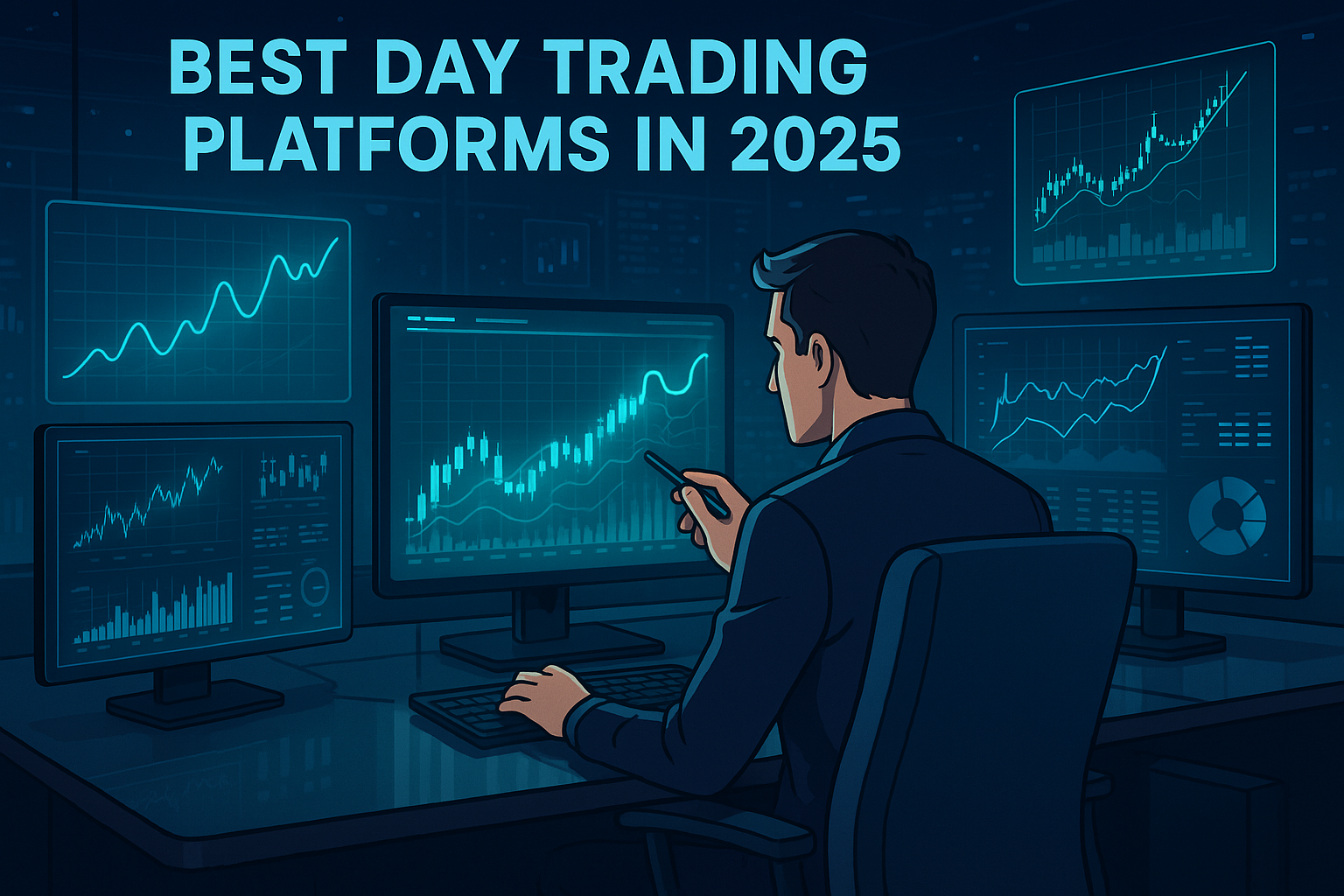 Best Day Trading Platforms in 2025 (Reviewed)
Best Day Trading Platforms in 2025 (Reviewed)
There are dozens of platforms available today, but not all of them are suitable for day trading. Based on features, reliability, and reputation, here are some of the best day trading platforms for 2025:
Investors need to be aware of the Best Day Trading Platforms in 2025 as they shape their trading strategies.
1. Interactive Brokers (IBKR)
Interactive Brokers is considered one of the top choices for professional and active traders. It offers ultra-fast execution, advanced charting tools, and access to global markets.
-
Pros: Low fees, wide range of assets (stocks, forex, options, futures), powerful trading terminal (Trader Workstation).
-
Cons: Complex interface; may feel overwhelming for beginners.
-
Best for: Experienced traders who want depth and global access.
2. TD Ameritrade (Thinkorswim)
Thinkorswim is a powerful day trading application provided by TD Ameritrade. Known for its advanced tools, it’s one of the most popular platforms in the U.S.
-
Pros: Excellent charting, paper trading (practice accounts), no platform fees.
-
Cons: Available mostly for U.S. traders; not the cheapest broker.
-
Best for: Traders who want a mix of education, practice, and real trading.
Many brokers are competing to offer the Best Day Trading Platforms in 2025.
3. E*TRADE
ETRADE is a user-friendly option for both beginners and experienced day traders. Its desktop platform, Power ETRADE, offers fast execution and strong analytical tools.
-
Pros: Easy-to-use interface, wide market access, solid reputation.
-
Cons: Higher commissions on some trades compared to discount brokers.
-
Best for: Beginners who want a balance of simplicity and features.
4. TradingView
While not a broker itself, TradingView is one of the best programs for stock market analysis. It offers world-class charting, community ideas, and broker integrations.
-
Pros: Best-in-class charting tools, cloud-based access, active trader community.
-
Cons: Requires linking to a broker to place trades.
-
Best for: Traders who focus on technical analysis.
5. Webull
Webull is a modern day trading app that’s popular among younger traders. It offers commission-free trading and a sleek mobile-first design.
-
Pros: No commissions, good mobile experience, beginner-friendly.
-
Cons: Limited advanced tools compared to pro platforms.
-
Best for: Beginners and casual day traders.
6. Robinhood (Bonus mention)
Robinhood became famous for introducing commission-free trading. While not as feature-rich as Thinkorswim or IBKR, it’s still a good entry point.
-
Pros: Free trades, very easy-to-use app.
-
Cons: Limited features; not ideal for professional day traders.
-
Best for: Absolute beginners exploring day trading.
With these reviews, traders can compare different platforms based on their skill level and needs. A professional might choose Interactive Brokers or Thinkorswim, while a beginner may start with Webull or Robinhood.
Understanding the Best Day Trading Platforms in 2025 is crucial for new traders.
Best Day Trading Platform for Beginners
Starting day trading can feel overwhelming. With so many platforms and brokers available, beginners often struggle to figure out where to start. The good news is that many platforms are designed with simplicity in mind, making it easier for new traders to learn the basics without getting lost in complex tools.
When choosing the best day trading platform for beginners, here are the key things to look for:
1. Easy-to-Use Interface
Beginners need a clean, simple design. Complicated dashboards with too many indicators can confuse new traders. Apps like Webull and Robinhood are good examples of beginner-friendly platforms.
2. Low Minimum Deposit
Many beginners don’t want to risk a large amount of money at the start. Platforms with low or zero minimum deposits are ideal. This allows you to practice with small amounts before scaling up.
3. Educational Resources
The best website for day trading beginners doesn’t just offer trading—it teaches. Look for platforms that provide tutorials, webinars, demo accounts, or even paper trading (practice without real money). Thinkorswim by TD Ameritrade is a great example because it offers paper trading accounts.
4. Mobile Access
Most beginners prefer mobile day trading apps because they are simpler and accessible anywhere. Webull and eToro are great mobile-first options.
5. Low Fees
Since beginners often make smaller trades, paying high commissions can eat into their learning experience. Platforms that offer commission-free trades are usually better for starting out.
Look for the Best Day Trading Platforms in 2025 that prioritize user experience.
Best Picks for Beginners in 2025:
-
Webull – commission-free and mobile-friendly.
-
Robinhood – simple app, best for absolute beginners.
-
TD Ameritrade (Thinkorswim) – best for learning and paper trading.
Best Day Trading Platform for Advanced Traders
While beginners need simplicity, advanced traders require power, flexibility, and speed. A professional day trader often handles multiple positions, monitors several markets at once, and executes trades in milliseconds. For them, the best intraday trading platform is one that combines cutting-edge tools with reliability.
Here are the features advanced traders look for:
1. High-Speed Execution
For active traders, even a one-second delay can cause losses. Platforms like Interactive Brokers (Trader Workstation)and Thinkorswim are designed to deliver lightning-fast order execution.
2. Advanced Order Types
Professional traders use more than just “buy” and “sell” buttons. They rely on:
-
Bracket orders (entry + stop-loss + take-profit combined)
-
Conditional orders (triggered when conditions are met)
-
Direct market access (DMA) for faster trading on exchanges
3. Powerful Charting and Analysis
Advanced traders depend heavily on technical analysis. Platforms like TradingView and MetaTrader offer deep customization, algorithmic strategies, and hundreds of technical indicators.
4. Risk Management Tools
Big positions mean big risks. The best day trading software helps traders minimize risk with real-time margin updates, portfolio tracking, and automatic stop-outs.
5. Multi-Market Access
Pro traders often diversify into stocks, forex, futures, and options. That’s why they need platforms that cover multiple asset classes in one place—something Interactive Brokers and E*TRADE handle well.
Choosing the Best Day Trading Platforms in 2025 can greatly impact your trading success.
Best Picks for Advanced Day Traders in 2025:
-
Interactive Brokers (IBKR) – unmatched in speed and global market access.
-
Thinkorswim by TD Ameritrade – advanced charting and paper trading.
-
MetaTrader 5 (MT5) – highly customizable with algorithmic trading support.
-
TradingView – best charting platform with broker integration.
Mobile Apps vs. Desktop Terminals
In today’s trading world, you can choose between mobile day trading apps and desktop trading terminals. Both have their strengths and weaknesses, and the right choice depends on your trading style.
Mobile Day Trading Apps
Mobile apps have made trading more accessible than ever. With just a smartphone, you can monitor markets, analyze charts, and place trades on the go. Platforms like Webull, Robinhood, and eToro are especially popular among beginners.
-
Pros:
-
Trade anytime, anywhere
-
Simple and user-friendly
-
Great for beginners who don’t need advanced tools
-
-
Cons:
-
Limited charting features compared to desktops
-
Small screen makes multi-chart analysis harder
-
Slower execution in some cases
-
Desktop Trading Terminals
Professional traders usually rely on desktop day trading software or terminals like Interactive Brokers Trader Workstation (TWS) or Thinkorswim. These platforms offer advanced tools that mobile apps can’t match.
The Best Day Trading Platforms in 2025 provide the necessary tools for success.
-
Pros:
-
Faster execution and low latency
-
Advanced charting, multiple monitors support
-
Access to algorithmic trading and complex orders
-
-
Cons:
-
Less portable (requires PC setup)
-
May feel overwhelming for beginners
-
Which One Should You Choose?
-
If you’re a beginner, a mobile day trading app is often enough.
-
If you’re a professional day trader, a desktop trading terminal is essential for serious performance.
-
Many traders actually use both: mobile apps for monitoring while away from their desk, and desktop platforms for in-depth analysis and execution.
In short, beginners can start small with apps, but if you want to trade like a pro, investing time in learning a desktop intraday trading platform is worth it.
Common Mistakes to Avoid When Choosing a Day Trading Website
Many new traders get excited about day trading but end up making poor platform choices. These mistakes can cost both time and money. Let’s go over the most common pitfalls:
1. Choosing a Platform Only for Low Fees
While saving on commissions sounds good, the cheapest broker is not always the best. Some low-cost platforms have poor execution speeds, limited charting, or weak customer support. These can cost you more than the small fees you save.
2. Ignoring Regulation and Security
Not checking if a broker is regulated by financial authorities (like SEC, FINRA, FCA, or ASIC) is risky. Unregulated brokers may promise high profits but can disappear with your money. Always verify the broker’s license.
3. Overlooking Trading Tools
A platform without strong charting, screeners, or order types will limit your trading strategies. Beginners often ignore these tools, but they become crucial as you grow.
4. Not Testing with a Demo Account
Jumping straight into live trading without practicing on a demo account is a common mistake. Demos let you test the platform, learn the interface, and practice strategies without losing real money.
5. Ignoring Customer Support
Day trading moves fast. If you face technical issues or delayed withdrawals, you’ll need quick customer support. Many traders regret not checking how responsive a broker’s support team is.
6. Forgetting About Mobile Compatibility
Some platforms don’t offer strong mobile apps. If you rely on trading while traveling, this can be a problem. Always check if the platform supports both desktop and mobile efficiently.
✅ Key Takeaway: The best day trading platform is not just about fees—it’s about speed, tools, security, and support. Avoid these mistakes, and you’ll save yourself a lot of frustration.
Best Day Trading Platforms for Beginners vs. Professionals
Not every trader has the same needs. A beginner looking for simple tools will need a different platform than a professional day trader who requires advanced features. Here’s a breakdown:
Being aware of the Best Day Trading Platforms in 2025 is essential for building a solid trading foundation.
For Beginners
Beginners need easy-to-use apps, low costs, and basic educational resources.
-
Robinhood – Very beginner-friendly with zero-commission trades, but limited tools.
-
Webull – Free trading with better charting than Robinhood, suitable for entry-level day trading.
-
eToro – Great for beginners who want to learn via copy trading (following expert traders).
-
SoFi Active Investing – Simple interface, fractional shares, and educational support.
Why Good for Beginners?
-
Simple dashboards
-
No/minimal commissions
-
Basic tutorials and learning resources
For Professionals
Experienced traders need speed, advanced tools, and flexibility.
-
Interactive Brokers (IBKR) – Known for ultra-fast execution, global market access, and professional-grade tools.
-
TD Ameritrade’s Thinkorswim – Excellent charting, backtesting, and advanced order types.
-
TradeStation – Great for algorithmic and technical traders, with deep analytics.
-
Lightspeed – Tailored for active traders who need extremely fast order execution.
Why Good for Professionals?
-
Direct market access
-
Advanced charting + algorithm support
-
Tools for managing multiple strategies
Beginners vs. Pros – Quick Comparison
| Feature | Beginners Need | Professionals Need |
|---|---|---|
| Fees | Low / Zero | Competitive but flexible |
| Ease of Use | Simple UI | Advanced customization |
| Tools | Basic charts | Advanced analysis, algo trading |
| Support | Tutorials & guides | 24/7 expert-level |
| Device Preference | Mobile apps | Desktop terminals |
Key Takeaway:
If you’re just starting, go for user-friendly platforms with free trading. Once you gain experience, move toward professional platforms that offer powerful software and faster execution.
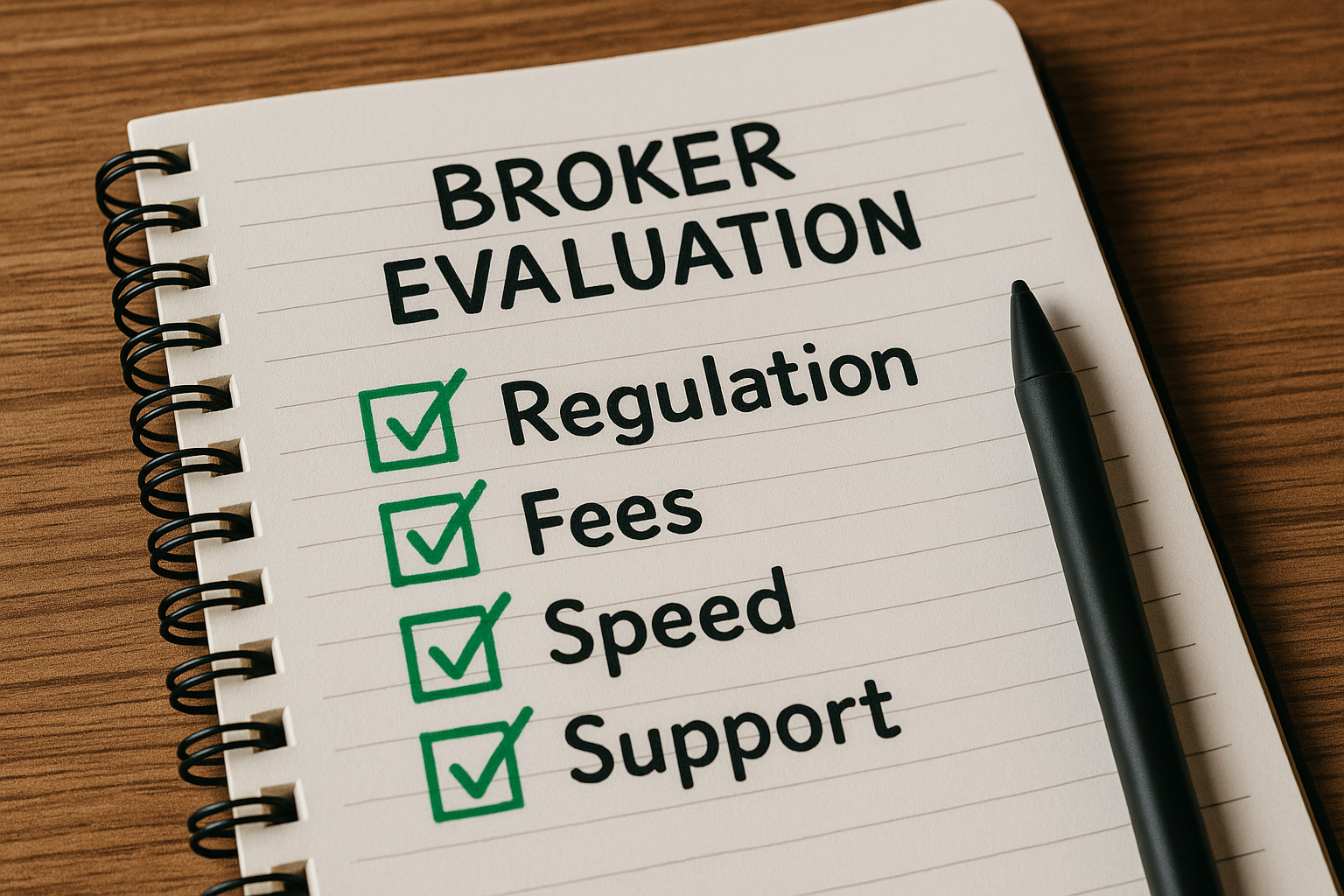 Tips for Evaluating the Best Broker for Day Trading
Tips for Evaluating the Best Broker for Day Trading
Choosing the right broker is just as important as picking the right trading platform. A broker connects you to the market, handles your orders, and provides the environment where you trade. Here are key tips to help you evaluate the best broker for day trading:
1. Check Regulation and Trustworthiness
Always ensure the broker is licensed by a recognized authority like:
-
SEC & FINRA (USA)
-
FCA (UK)
-
ASIC (Australia)
-
CySEC (Europe)
This protects your funds and ensures fair trading practices.
2. Look at Execution Speed
Day trading relies on milliseconds. A good broker should offer:
-
Direct market access (DMA)
-
Low-latency order execution
-
Minimal slippage
Slow brokers = missed opportunities.
3. Compare Commission and Fees
Don’t just look at commission-free offers. Some brokers may charge hidden costs such as:
-
Spreads (buy/sell price difference)
-
Inactivity fees
-
Withdrawal charges
Calculate the true cost per trade, not just headline offers.
4. Platform & Software Quality
Does the broker offer a reliable platform?
-
Desktop terminals for professionals
-
Mobile apps for quick trading
-
Advanced charting and order types
A strong broker should provide flexible access.
5. Availability of Margin & Leverage
Many day traders use margin accounts for higher positions. Check if the broker offers:
-
Competitive margin rates
-
Proper risk management tools
-
No aggressive push toward over-leverage
6. Customer Support
When trading live markets, problems can’t wait. Test the broker’s support:
-
Is live chat available?
-
How fast do they reply?
-
Do they have 24/7 support or only office hours?
7. Extra Features
Some brokers stand out by offering:
-
Demo accounts for practice
-
Research tools and market news
-
API access for algorithmic traders
Pro Tip: Don’t choose a broker just because your friend uses it. Test multiple brokers using demo accounts before committing your real money.
How to Choose the Best Day Trading Platform for Beginners (Step-by-Step Guide)
If you’re new to day trading, choosing your first platform can feel overwhelming. Follow this step-by-step process to make a smart choice:
Step 1: Define Your Trading Goals
Ask yourself:
-
Do you want to trade stocks, forex, or crypto?
-
Are you focused on short-term profits or learning first?
Your goals will shape whether you need a simple app or a professional terminal.
Step 2: Check Regulation and Safety
Only pick platforms that are regulated. For example:
-
USA: FINRA, SEC
-
UK: FCA
-
Australia: ASIC
This ensures your money is protected.
Step 3: Start with a Demo Account
Almost all good platforms provide demo trading. Use it to:
-
Learn the interface
-
Test strategies risk-free
-
Practice order execution
Step 4: Compare Fees and Commissions
Look beyond “free trading” slogans. Compare:
-
Spread costs
-
Withdrawal charges
-
Hidden fees
Beginners should focus on low-cost brokers to avoid eating into small profits.
Step 5: Evaluate Ease of Use
For beginners, simple design matters. Test:
-
Is the app/website easy to navigate?
-
Can you quickly buy and sell?
-
Are charting tools clear?
Step 6: Check Available Tools
Beginners may not need advanced tools at first, but it’s smart to choose a platform that can grow with you. Look for:
-
Basic charts and indicators
-
Watchlists
-
Educational resources
Step 7: Look at Customer Support
Beginners often need help. Check if the platform offers:
-
Live chat or phone support
-
Fast response times
Many features define the Best Day Trading Platforms in 2025.
-
Educational guides
Step 8: Start Small and Scale Up
Once you choose a platform, begin with small trades. As you gain confidence, you can scale your account and upgrade to more advanced platforms if needed.
Beginner-Friendly Tip: Platforms like Webull, eToro, and Robinhood are popular starting points. Once you become skilled, you can move to Interactive Brokers or Thinkorswim.
Utilizing the Best Day Trading Platforms in 2025 will set you up for future success.
Future of Day Trading Platforms (AI, Automation & Technology Trends)
The trading world is changing fast. Today’s day trading platforms are no longer just about placing buy/sell orders. With AI, automation, and advanced analytics, the future of trading looks even more exciting.
1. Artificial Intelligence (AI) in Trading
AI is being used to analyze massive amounts of market data in real time.
-
AI tools can predict short-term market trends
-
Detect unusual trading patterns
-
Offer personalized trading insights
Many platforms are already integrating AI-powered assistants to guide traders.
2. Algorithmic & Automated Trading
Automation allows traders to set rules and let software execute trades automatically.
-
Faster than human reaction
-
Eliminates emotional trading mistakes
-
Works 24/7 on multiple markets
Professional platforms like TradeStation and MetaTrader already support algorithmic trading.
3. Mobile-First Platforms
As more traders use phones, platforms will shift to mobile-first experiences. Expect:
-
Advanced charting in apps
-
Instant push alerts
-
Seamless syncing with desktop terminals
4. Blockchain & Crypto Integration
Many day trading platforms now include crypto trading alongside stocks and forex. In the future, we’ll see:
-
More secure blockchain-based transactions
-
Cross-market platforms (stocks + crypto + forex all in one place)
5. Personalized Dashboards with Big Data
Future trading software will offer:
-
Custom insights based on your style
-
Risk warnings before you place bad trades
-
AI-driven portfolio optimization
6. Social & Copy Trading Growth
Platforms like eToro made copy trading popular. In the future, more brokers will allow:
-
Copying professional traders’ strategies
-
Social discussions and community-driven insights
-
Shared learning environments for beginners
Key Takeaway: The future of day trading platforms will be smarter, faster, and more accessible. Traders who adapt to AI, automation, and advanced tools will have a big advantage in the next generation of markets.
In summary, finding the Best Day Trading Platforms in 2025 is vital for any trader.
Conclusion:
Choosing the best day trading platform is not about picking the flashiest app or the cheapest broker—it’s about finding the one that matches your goals, skills, and trading style.
-
If you’re a beginner, start with user-friendly apps like Webull, eToro, or Robinhood. They are simple, low-cost, and great for learning.
-
If you’re a professional, platforms like Interactive Brokers, Thinkorswim, or TradeStation will give you the advanced tools, speed, and flexibility you need.
-
Always look at fees, regulation, execution speed, and tools before making your choice.
Remember, your trading platform is like your workspace. A poor choice can hold you back, but the right one can give you the confidence to grow as a trader.
Final Tip: Test multiple brokers with demo accounts, start small, and upgrade as your skills improve.
At the end of the day, the best trading platform for day trading is the one that feels reliable, easy, and powerful enough to help you trade with confidence.
If you’re planning to start day trading in 2025, choosing a reliable platform is crucial. According to Investopedia, the right platform can make a big difference in speed, accuracy, and profitability. Many experts also recommend reviewing broker comparisons from StockBrokers.com and Finder.com to understand fees, tools, and trading limits. Platforms like Interactive Brokers, TD Ameritrade, and eToro continue to lead the market because of their fast execution and advanced analysis tools.

